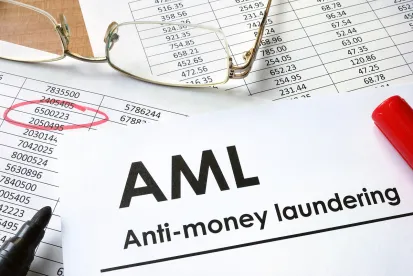This is Part 4 of the series discussing the Anti-Money Laundering Act of 2020, commonly known as the Corporate Transparency Act (the Act), the intent of which is to assist in the collection of beneficial ownership data on corporate entity bank customers. Part 2, available here, discussed the reasons for the establishment of the Bank Secrecy Act (BSA) and the reason for the enactment of the Corporate Transparency Act in 2020. It also discussed the information that is currently collected by banks and that must be reported to a central data agency of the Financial Crimes Enforcement Network (FinCEN) over the course of the next two years. Part 3, available here, discussed the wide range of exclusions from the reporting requirements, including those for public companies as well as companies that have more than 20 full-time employees, report more than $5 million in yearly revenue to the Internal Revenue Service, and have an operating presence at a physical office within the United States.
Whistleblowing can be lucrative. In its annual report to Congress on its whistleblower program,[1] the Securities and Exchange Commission reported payments of $564 million in fiscal year 2021, more awards than in all prior years combined. With the administration’s focus on white-collar crime,[2] the substantial whistleblower awards contained in the Act are certain to drive these numbers up in the future.
Previously, the awards payable to a whistleblower were capped at the lesser of $150,000 or 25% of the net amount of the fine or penalty. Under the Act, whistleblowers who reveal original information regarding anti-money laundering (AML) violations to FinCEN or the Department of Justice would be entitled to up to 30% of the total monetary sanctions imposed if those sanctions exceed $1 million in total. The Act also includes a number of additional anti-retaliation protections for whistleblowers. Since the reporting requirements prior to the Act have been strictly on banks, banks have been operating under these sanctions for years and whistleblowers would necessarily be bank employees. With the expansion of the reporting requirements to companies, whistleblowers now can be employees of reporting companies, and the Act could apply to a company that falsely reported an exemption or reported false information on corporate structure.
In addition to providing enticements to whistleblowers, the Act imposes significant penalties for companies and individuals violating the BSA/AML requirements. A civil penalty of $500 per day may be imposed for willful failure to comply as well as criminal penalties of up to $10,000 and up to two years’ imprisonment. Any person convicted of violating a BSA provision must return their profits or bonuses. For repeat offenders, the penalty can be as high as three times the profit gained. For egregious violations, someone could be banned from banking for 10 years from the time of conviction. For concealment violations, defined as “knowing concealment, falsification, misrepresentation or attempt to do any of the foregoing,” a penalty of up to 10 years’ imprisonment and a $1 million fine or both may be imposed.
In summary, money laundering or terrorist financing has been a hazardous world for the banks responsible for policing such activity as well as for the money launderers and terrorist financers themselves. The hazards have now been expanded to the corporate world, which has largely been immune from these risks except to answer seemingly endless questions from banks about ownership. This risk of whistleblower reporting and penalties will now apply to corporate America as well. Hopefully, corporate America will not be caught by surprise.
[1] SEC 2021 Annual Report to Congress, Whistleblower Program.
[2] Address of Deputy Attorney General Lisa O. Monaco to ABA 36th National Institute on White Collar Crime discussing priorities. (October 28, 2021)




 />i
/>i

